Anthem |
“The Star-Spangled Banner” |
Calling code |
+1 |
Capital |
Washington, D.C. |
Chief Justice |
John Roberts |
Currency |
U.S. dollar ($) (USD) |
Date format |
mm/dd/yyyy |
Demonym |
American |
Density |
87/sq mi (33.6/km2) (185th) |
Driving side |
Right |
Ethnic groups |
57.8% White, 18.7% Latino, 12.1% Black, 5.9% Asian, 0.7% Native American, 0.2% Pacific Islander, 4.1% multiracial, 0.5% other |
GDP (nominal) |
Total: $26.855 trillion (1st)<br>Per capita: $80,035 (7th) |
GDP (PPP) |
Total: $26.855 trillion (2nd)<br>Per capita: $80,035 (8th) |
Gini (2020) |
39.4 (medium) |
Government |
Federal presidential constitutional republic and a liberal representative democracy |
HDI (2021) |
0.921 (very high · 21st) |
House Speaker |
Kevin McCarthy |
Independence |
Confederation: March 1, 1781<br>Declaration: July 4, 1776<br>Last Amendment: May 5, 1992<br>Recognized: September 3, 1783<br>Revolution: March 22, 1765<br>Constitution: June 21, 1788 |
Internet TLD |
.com, .us |
ISO 3166 code |
US |
Largest city |
New York City |
Legislature |
Congress |
Motto |
“In God We Trust” |
National language |
English |
Official languages |
None at the federal level (English is the de facto national language) |
Population |
2022 estimate: 333,287,557<br>2020 census: 331,449,281 (3rd) |
President |
Joe Biden |
Religion |
63% Christianity, 40% Protestantism, 21% Catholicism, 2% other Christian, 29% no religion, 1% Buddhism, 1% Hinduism, 1% Islam, 1% Judaism, 2% other, 2% unanswered |
Time zone |
UTC−4 to −12, +10, +11<br>Summer (DST): UTC−4 to −10 |
Total area |
3,796,742 sq mi (9,833,520 km2) (3rd) |
Vice President |
Kamala Harris |
Water (%) |
4.66% (2015) |
History of the United States:
The history of the United States is a rich and complex tapestry woven with triumphs, challenges, and profound societal transformations. From its humble beginnings as a collection of colonies to its current status as a global superpower, the United States has experienced a remarkable journey of growth and change. This concise overview explores key moments and eras that have shaped the nation’s identity, from the struggles for independence and the abolition of slavery to the industrialization and technological advancements of the 20th century. By examining the nation’s past, we gain insights into the forces that have shaped contemporary America and the ongoing pursuit of social progress, equality, and global leadership.
-
Colonial Era (1607-1776):
- The Colonial Era began with the establishment of Jamestown, the first permanent English settlement in North America, in 1607. Over the following years, 13 original colonies were established along the eastern seaboard.
- The Pilgrims arrived on the Mayflower in 1620 and signed the Mayflower Compact, a governing document that established a social contract for the Plymouth Colony.
- The colonies relied on agriculture, with tobacco becoming a major cash crop in the Southern colonies.
- Tensions grew between the colonists and the British Crown, leading to the French and Indian War in the 1750s.
- The Proclamation of 1763, issued by Britain after the French and Indian War, restricted colonial settlement west of the Appalachian Mountains, leading to increased dissatisfaction among the colonists.
-
American Revolution (1775-1783):
- The American Revolution was a conflict between Great Britain and its American colonies, seeking independence. It began with events like the Boston Tea Party in 1773, where colonists protested against British taxation.
- In 1776, the Continental Congress adopted the Declaration of Independence, written by Thomas Jefferson, proclaiming the colonies’ separation from Britain.
- The Revolutionary War ensued, with notable battles including Lexington and Concord, Saratoga, and Yorktown.
- The Treaty of Paris in 1783 formally recognized the United States as an independent nation.
-
Early Republic (1789-1849):
- The United States adopted the Constitution in 1787, establishing a federal government. George Washington became the first president.
- The Louisiana Purchase in 1803 doubled the size of the country, acquiring land from France.
- The War of 1812 between the United States and Britain tested American sovereignty and resulted in the burning of Washington, D.C.
- The nation experienced westward expansion, driven by the belief in Manifest Destiny and the desire for territorial growth.
- The Monroe Doctrine, announced in 1823, asserted U.S. opposition to European colonization in the Americas.
-
Slavery and Civil War (1849-1865):
- The issue of slavery intensified in the mid-19th century, leading to conflicts between the North and South.
- The Dred Scott decision in 1857 by the Supreme Court denied African Americans citizenship rights.
- Southern states seceded from the Union, leading to the Civil War in 1861.
- Key battles such as Gettysburg and Antietam determined the war’s outcome.
- President Abraham Lincoln issued the Emancipation Proclamation in 1863, declaring the freedom of slaves in Confederate territories.
- The Union emerged victorious, and the Reconstruction Era aimed to rebuild the South and address civil rights for freed slaves.
-
Industrialization and Gilded Age (1865-1900):
- The United States experienced rapid industrialization, with the rise of railroads, manufacturing, and urban centers.
- Large corporations, led by figures such as John D. Rockefeller and Andrew Carnegie, dominated the economy, giving rise to the term “Robber Barons.”
- Labor movements emerged, advocating for workers’ rights and improved working conditions.
- Immigration increased significantly, with millions of people arriving from Europe and Asia.
-
Progressive Era (1900-1920):
- The Progressive Era aimed to address social, political, and economic issues arising from industrialization.
- Theodore Roosevelt’s presidency was marked byprogressive reforms, including trust-busting to regulate monopolies and the conservation of natural resources.
- The women’s suffrage movement gained momentum, leading to the passage of the 19th Amendment in 1920, granting women the right to vote.
- The United States entered World War I in 1917, contributing to the Allied victory.
- Prohibition, enacted through the 18th Amendment, banned the production and sale of alcoholic beverages.
-
Roaring Twenties and Great Depression (1920-1939):
- The 1920s were characterized by economic prosperity, cultural changes, and technological advancements, earning the nickname “Roaring Twenties.”
- The stock market crash of 1929 triggered the Great Depression, a severe economic downturn that lasted throughout the 1930s.
- President Franklin D. Roosevelt implemented the New Deal, a series of programs and reforms aimed at providing relief, recovery, and reform during the Great Depression.
- The Dust Bowl, a severe drought and soil erosion in the Great Plains, led to mass migrations of farmers to California in search of work.
-
World War II and Cold War (1939-1991):
- The United States entered World War II after the Japanese attack on Pearl Harbor in 1941.
- The U.S. played a major role in the Allied victory, with significant contributions to the European and Pacific theaters.
- The Holocaust and the atrocities committed by Nazi Germany were revealed, leading to a renewed commitment to human rights.
- The atomic bombings of Hiroshima and Nagasaki in 1945 brought an end to the war, but also raised ethical and geopolitical concerns.
- The post-war period saw the establishment of the United Nations and the division of the world into the democratic West and the communist East during the Cold War.
- The Civil Rights Movement gained momentum in the 1950s and 1960s, led by figures like Martin Luther King Jr., advocating for racial equality and desegregation.
- The United States became involved in conflicts such as the Korean War (1950-1953) and the Vietnam War (1955-1975), with significant social and political consequences.
-
Contemporary America (1991-present):
- The fall of the Soviet Union in 1991 marked the end of the Cold War, shifting global dynamics and establishing the United States as the sole superpower.
- Technological advancements, particularly in the field of computing and the internet, revolutionized communication and daily life.
- The United States faced challenges such as the Gulf War (1990-1991), the 9/11 terrorist attacks in 2001, and subsequent military actions in Afghanistan and Iraq as part of the War on Terror.
- The election of Barack Obama in 2008 marked a historic milestone as the first African American president.
- Social movements like Black Lives Matter and #MeToo brought attention to systemic racial inequality and gender discrimination.
- The country continues to grapple with political polarization, economic inequality, climate change, and other pressing issues.
This overview provides a broad outline of the history of the United States, highlighting significant events and periods that have shaped the nation.
Geographical Overview of the United States
The United States, spanning over 3.12 million square miles, is a geographically diverse country with a wide range of landscapes, climates, and biodiversity. From the Atlantic seaboard to the Rocky Mountains, from the arid deserts of the Southwest to the tropical regions of Hawaii and Florida, the U.S. offers a remarkable variety of natural features. This summary provides an overview of the country’s geography, highlighting its land areas, diverse ecosystems, climate patterns, and conservation efforts.
-
Total Area:
- The United States covers 3.12 million square miles (8.08 million square kilometers).
- The 48 contiguous states and the District of Columbia occupy 2.96 million square miles (7.66 million square kilometers), accounting for 83.65% of the total U.S. land area.
- Alaska, Hawaii, and the five populated territories make up the remaining portion.
-
Size Ranking:
- The United States is the third-largest country by land area, slightly larger than Canada and behind Russia and China.
-
Diverse Landscapes:
- Atlantic Seaboard: Coastal plain, deciduous forests, and rolling hills in the Piedmont.
- Eastern Seaboard and Midwest: Appalachian Mountains, Great Lakes, and grasslands of the Midwest.
- Central Region: Mississippi–Missouri River, Great Plains, and a highland region in the southeast.
- Rocky Mountains: Stretching north to south, peaking at over 14,000 feet (4,300 meters) in Colorado.
- Western Regions: Great Basin, Chihuahua, Sonoran, and Mojave deserts.
- Pacific Coast: Sierra Nevada and Cascade mountain ranges parallel to the coast.
- Highest Point: Alaska’s Denali at 20,310 feet (6,190.5 meters) is the highest peak in the country.
- Volcanic Activity: Active volcanoes in Alaska and volcanic islands in Hawaii.
-
Climate:
- Varied climate types due to size and geographical diversity.
- East of 100th Meridian: Humid continental to humid subtropical.
- Great Plains: Semi-arid.
- American West: Alpine in mountains, arid in Great Basin, desert in the Southwest.
- Coastal Regions: Mediterranean, oceanic, and tropical climates.
- Extreme Weather: Hurricanes along the Gulf of Mexico, frequent tornadoes in Tornado Alley.
-
Biodiversity and Conservation:
- Rich biodiversity with endemic species.
- National parks and protected areas managed by the National Park Service.
- Environmental concerns include oil and nuclear energy, pollution, wildlife protection, deforestation, and climate change.
- Environmental agencies: Environmental Protection Agency (EPA), United States Fish and Wildlife Service.
- International commitments: Paris Agreement on climate change, Environmental Performance Index ranking.
The United States is a geographically diverse country, featuring vast land areas, varied landscapes, climates, and abundant biodiversity. The country places importance on conservation efforts and has established national parks and protected areas to safeguard its natural heritage. However, environmental challenges such as pollution, climate change, and wildlife conservation persist and require ongoing attention and management.
United States’ Economic Profile
The United States stands as a global economic powerhouse, wielding significant influence in various sectors and maintaining a position of prominence in the international arena. With a gross domestic product (GDP) of $25.4 trillion, accounting for 25% of the world’s GDP at market exchange rates, the United States has firmly established itself as the largest economy globally. This article delves into the key aspects that contribute to the country’s economic dominance, exploring its technological advancements, financial prowess, trading relationships, income dynamics, scientific achievements, and transportation infrastructure.
-
Economic Dominance:
- The United States has a GDP of $25.4 trillion, constituting 25% of the global GDP at market exchange rates.
- It holds the first rank in nominal GDP and the second rank in GDP (PPP).
- The U.S. has been the world’s largest economy since at least 1900.
-
Technological Advancement:
- The U.S. is a leader in technological innovation in fields such as artificial intelligence, computers, pharmaceuticals, aerospace, and military equipment.
- It benefits from abundant natural resources, a well-developed infrastructure, and high productivity.
-
Global Financial Power:
- The U.S. dollar is the most widely used currency in international transactions and serves as the world’s foremost reserve currency.
- New York City is the principal financial center, hosting the largest stock exchanges and driving the global economy.
-
Trading Partners:
- The United States maintains significant trade relations with the European Union, Mexico, Canada, China, Japan, and other countries.
- It is the world’s largest importer and the second-largest exporter.
-
Income and Poverty:
- The U.S. has high average household and employee income.
- However, income inequality remains a challenge, with the richest 10% owning a significant portion of the country’s wealth.
- Poverty rates and wealth concentration are areas of concern.
-
Science, Technology, and Energy:
- The U.S. leads in scientific research, innovation, and development.
- It has made significant contributions in areas like telecommunications, aviation, electronics, and space exploration.
- The country’s energy consumption heavily relies on fossil fuels.
-
Transportation:
- The U.S. has an extensive rail network and the longest network of public roads in the world.
- Personal transportation is dominated by automobiles, with the U.S. being a major automobile manufacturer and market.
- The civil airline industry is privately owned, and the country has numerous airports and container ports.
The United States holds a dominant position in the global economy, boasts technological advancements, plays a crucial role in international finance, engages in significant trade, exhibits income disparities, excels in scientific and technological fields, and has an extensive transportation infrastructure.
Cultural Aspects of the United States
The United States is a culturally diverse and influential nation that embodies a rich tapestry of traditions, values, and artistic expressions. From its inception, the country has been shaped by a unique blend of historical events, immigration, and social movements. This article explores the cultural aspects of the United States, highlighting its core values, the assimilation of various cultures, freedom of expression, literature and visual arts, cinema and theater, music, and mass media. By delving into these facets, we gain a deeper understanding of the diverse and vibrant cultural landscape that defines the United States today.
I. American Values and Beliefs
- The Heart of the American Spirit: Discover the core beliefs that shape the American identity.
- Liberty, Equality, Democracy: Explore the pillars of the “American creed” that inspire the nation.
- From Individualism to Altruism: Uncover the unique blend of self-reliance and compassion that defines Americans.
- Chasing the American Dream: Learn about the powerful idea of social mobility and its influence on immigrants.
II. Literature and Visual Arts
- Unleashing Literary Giants: Journey through the captivating works of iconic American authors who forged their own path.
- Tales that Transcend Borders: Discover the timeless stories that captivated readers worldwide.
- Seeking the Great American Novel: Dive into the contenders that captured the essence of the American experience.
- Architectural Marvels: Explore the groundbreaking designs that shaped skylines and inspired awe.
III. Cinema and Theater
- Lights, Camera, Hollywood: Unveil the glitz and glamour of the world’s entertainment capital.
- From Silver Screen Legends to Blockbuster Hits: Meet the iconic figures and films that defined American cinema.
- The Streaming Revolution: Witness how American platforms reshaped the way we consume movies and TV shows.
- Broadway’s Magic: Experience the enchantment of American theater in the heart of Manhattan.
- Stardom on Stage: Discover the actors who made their mark through captivating performances.
IV. Music
- A Melodic Tapestry: Uncover the rich tapestry of American folk music, blending diverse traditions and cultural influences.
- Rhythm, Soul, and the Birth of Genres: Trace the roots of jazz, country, blues, and rock, shaping the American musical landscape.
- Iconic Voices, Global Impact: Celebrate the legendary artists whose music resonates far beyond U.S. borders.
V. Mass Media
- The Power of the Airwaves: Explore the influential broadcast networks, newspapers, and radio stations shaping public discourse.
- Television Revolution: Enter the world of cable TV, where a myriad of channels cater to diverse interests.
- The Digital Age: From online platforms to video games, discover the digital innovations shaping media in the U.S.
VI. Cuisine
- Flavors of America: Savor the diverse culinary landscape that blends indigenous, immigrant, and regional influences.
- Thanksgiving Feast: Immerse yourself in the beloved holiday tradition, where quintessential American dishes take center stage.
VII. Sports and Athletics
- The Great American Pastime: E perience the thrill of baseball, America’s beloved national sport.
- Gridiron Glory: Dive into the excitement and intensity of American football, a cultural phenomenon.
- Hoops and Heroes: Witness the passion and greatness of basketball, showcasing iconic players and teams.
- Olympic Dominance: Discover the powerhouse athletes who have consistently brought glory to the United States on the global stage.
VIII. Technological Advancements
- Silicon Valley: Uncover the innovative spirit of the tech industry, where groundbreaking companies revolutionize the world.
- From Garage to Global: Explore the stories of entrepreneurs who turned their ideas into multimillion-dollar enterprises.
- The Digital Frontier: Delve into the advancements in computing, software, and communication that have shaped the modern world.
IX. Civil Rights and Social Movements
- Marching for Equality: Learn about the pivotal moments and influential figures in the fight for civil rights.
- Women’s Suffrage: Celebrate the movement that granted women the right to vote and paved the way for gender equality.
- LGBTQ+ Rights: Trace the progress made towards inclusivity and acceptance, with milestones and ongoing struggles.
- Environmental Activism: Discover the environmental movements that seek to preserve nature and combat climate change.
X. Scientific Breakthroughs
- Space Exploration: Journey through America’s quest for the stars, from the moon landing to the Mars missions.
- Medical Advancements: Explore the groundbreaking discoveries and innovations that have revolutionized healthcare.
- Technological Innovations: Witness the inventions and breakthroughs that have transformed various industries.
XI. Historical Events and Icons
- Independence and Founding Fathers: Understand the birth of the nation and the principles upon which it was built.
- The Civil War: Examine the defining conflict that tested the nation’s unity and led to emancipation.
- World Wars and Global Influence: Learn how America’s involvement in major wars shaped the geopolitical landscape.
- Inspirational Leaders: Discover the influential figures who have shaped American history through their leadership and vision.
XII. Hollywood and Pop Culture
- The Golden Age of Hollywood: Dive into the glamour and glitz of the entertainment industry, featuring legendary stars and iconic films.
- Music that Moves: Explore the evolution of American music, from jazz and blues to rock ‘n’ roll, hip-hop, and beyond.
- Pop Culture Phenomena: Celebrate the impact of American TV shows, fashion trends, and viral moments that have captured the world’s attention.
XIII. Culinary Delights
- The Melting Pot: Discover the rich and diverse culinary heritage of the United States, influenced by various immigrant communities.
- Regional Specialties: Indulge in the unique flavors and dishes that define different regions across the country, from Southern comfort food to New England seafood.
XIV. Natural Wonders
- National Parks: Immerse yourself in the breathtaking beauty of America’s national parks, from the Grand Canyon to Yosemite, showcasing diverse landscapes and wildlife.
- Stunning Coastlines: Experience the allure of America’s coastal regions, with stunning beaches, picturesque lighthouses, and vibrant seaside towns.
XV. American Dream and Entrepreneurship
- Rags to Riches: Explore inspiring stories of individuals who achieved success and prosperity through hard work and determination.
- Innovation and Startups: Learn about the thriving startup culture in the United States, where innovative ideas come to life.
XVI. American Literature and Poetry
- Literary Greats: Discover the works of influential American authors, such as Mark Twain, Ernest Hemingway, and Toni Morrison.
- Poetic Expressions: Explore the beauty and power of American poetry, from Walt Whitman’s “Leaves of Grass” to Langston Hughes’ “Harlem Renaissance” poetry.
Demographic Of United states
The United States, a nation known for its diversity, technological advancements, and global influence, encompasses a complex tapestry of cultures, institutions, and challenges. From its unique healthcare system to its education landscape and multicultural society, the United States stands as a fascinating amalgamation of strengths and areas for improvement. Let’s explore some key aspects that shape the fabric of this diverse nation.
Population:
-
-
- The population of the United States was 3,929,326 in 1790 and has been increasing steadily over the years.
- The population reached 331,449,281 in the 2020 census.
- The United States is the third most populous country in the world, after China and India.
- The population growth rate has been relatively stable, with a net gain of approximately one person every 100 seconds.
- In 2021, the total fertility rate in the United States was 1.7 children per woman.
- The United States has a diverse population, with various racial and ethnic groups.
- White Americans of European, Middle Eastern, or North African ancestry make up the largest racial and ethnic group, followed by Hispanic and Latino Americans.
- African Americans are the third-largest ancestry group, while Asian Americans and Native Americans make up smaller percentages of the population.
- The median age of the United States population in 2020 was 38.5 years.
Population Changes Over Time: Census Data (1790-2022)
Here’s the historical population data presented in a table format:
Census
Population
% Change
1790
3,929,326
—
1800
5,308,483
35.1%
1810
7,239,881
36.4%
1820
9,638,453
33.1%
1830
12,866,020
33.5%
1840
17,069,453
32.7%
1850
23,191,876
35.9%
1860
31,443,321
35.6%
1870
38,925,598
23.8%
1880
50,189,209
28.9%
1890
62,979,766
25.5%
1900
76,212,168
21.0%
1910
92,228,496
21.0%
1920
106,021,537
15.0%
1930
122,775,046
15.8%
1940
132,164,569
7.6%
1950
150,697,361
14.0%
1960
179,323,175
19.0%
1970
203,392,031
13.4%
1980
226,545,805
11.4%
1990
248,709,873
9.8%
2000
281,421,906
13.2%
2010
308,745,538
9.7%
2020
331,449,281
7.4%
2022
333,287,557
0.6%
-
Immigration:
- The United States has the highest number of immigrant population in the world, with 50,661,149 people.
- Immigrants and U.S.-born children of immigrants account for 28% of the overall U.S. population.
- In 2017, there were 20.7 million naturalized citizens, 12.3 million lawful permanent residents, 2.2 million temporary lawful residents, and 10.5 million unauthorized immigrants in the United States.
- The United States has historically led the world in refugee resettlement.
Language:
- English is the most commonly spoken language in the United States.
- There is no official language at the federal level, but most states have declared English as the official language.
- Some states and U.S. territories have recognized local or indigenous languages alongside English, such as Hawaiian, Native languages in Alaska, Sioux in South Dakota, Samoan in American Samoa, Spanish in Puerto Rico, Chamorro in Guam, and Carolinian and Chamorro in the Northern Mariana Islands.
- Spanish is widely spoken in Puerto Rico.
Religion:
- The United States has a diverse religious landscape.
- Christianity is the most common religion, with Protestantism and Catholicism as the largest denominations.
- Other significant religious groups include Judaism, Islam, Hinduism, Buddhism, and various other faiths.
- Around 30% of Americans describe themselves as having no religion.
- The United States has the largest Christian population in the world and a significant number of non-Christian religious adherents.
- Membership in religious institutions has declined over the years.
- Religion in the United States is diverse, and there is freedom of religion guaranteed by the First Amendment of the U.S. Constitution. Christianity is the predominant religion, with various denominations represented, including Protestantism, Catholicism, and Mormonism. Other major religions in the U.S. include Judaism, Islam, Hinduism, and Buddhism. Additionally, a significant number of Americans identify as having no religious affiliation.
Urbanization:
- Approximately 82% of Americans live in urban areas, including suburbs.
- Many U.S. metropolitan populations are growing rapidly, particularly in the South and West.
- New York, Los Angeles, Chicago, and Houston are some of the largest cities in the United States.
- The urbanization rate in the United States is high, with the majority of Americans living in urban areas and suburbs. Major cities such as New York, Los Angeles, Chicago, and Houston have large populations. Urbanization has contributed to economic growth and cultural diversity but has also presented challenges such as overcrowding, traffic congestion, and disparities in urban development.
Education:
- Public education in the United States is operated by state and local governments and regulated by the United States Department of Education.
- Education is compulsory from the age of five or six until 18, with some variations among states.
- The United States has many private and public institutions of higher education, with some of the top-ranked universities in the world.
- The country spends the most per student on education and has a high number of Nobel Prize winners.
- However, student loan debt has been increasing significantly in recent years.
- Education in the United States is primarily the responsibility of state and local governments. Public education is funded and regulated at the state level, with each state having its own education system. Education is compulsory for children from the age of five or six until they turn 18, and most students attend public schools. However, there are also private schools and homeschooling options available.
- The United States has a vast number of colleges and universities, both public and private. Higher education is highly valued in the U.S., and many students pursue bachelor’s degrees and advanced degrees. The country has a reputation for having some of the world’s top universities, and it attracts a large number of international students.
Health:
- U.S. life expectancy has experienced a decline in recent years, primarily due to factors such as the COVID-19 pandemic, accidents, drug overdoses, and chronic diseases.
- Americans face health disparities based on race and ethnicity, with different groups experiencing varying life expectancies.
- The United States has higher rates of obesity, suicide, and teenage pregnancy compared to other high-income countries.
- The United States is known for its advanced medical research and technology, and it is home to many prestigious medical institutions and universities. The country has produced numerous Nobel Prize winners in the field of medicine and has made significant contributions to medical advancements and innovations.
- The COVID-19 pandemic has further highlighted the weaknesses and inequalities in the U.S. health care system. The country experienced a high number of cases and deaths, and the pandemic exacerbated existing disparities in access to healthcare and health outcomes.
Overall, the United States is a country with a complex and dynamic population, diverse cultures, and a mix of strengths and challenges in areas such as healthcare, education, and urbanization.
Overview of the United States
Government and politics
The United States is a federal republic consisting of 50 states, a federal district, five territories, and several uninhabited island possessions.It is the world’s oldest surviving federation and the oldest democracy, according to the World Economic Forum.The United States is a liberal representative democracy with majority rule tempered by minority rights protected by law.The country is classified as a liberal democracy by major democracy indexes.The United States has low levels of both actual and perceived corruption, according to the 2022 Corruption Perceptions Index and Global Corruption Barometer.
Constitution and Governance:
- The U.S. Constitution serves as the supreme legal document, establishing the structure and responsibilities of the federal government and its relationship with the states.
- The Constitution has been amended 27 times, with the first ten amendments (Bill of Rights) and the Fourteenth Amendment forming the basis of individual rights.
- All laws and governmental procedures are subject to judicial review, with the courts having the power to void laws that violate the Constitution.
- Sovereignty is shared between the federal and state governments in the American federal system.
- Local governments, which are administrative divisions of the states, also govern citizens of the states.
- Governance on various issues is decentralized, resulting in differing state laws on subjects like abortion, cannabis, the death penalty, guns, and economic policy.
Political System:
- The United States has operated under an informal two-party system throughout its history, although other parties have run candidates.
- The major parties are currently the Republicans and Democrats, and the country is in either the Fifth or Sixth Party System.
- Both parties have factions and individuals that deviate from party positions, as there is no formal central organization at the national level controlling membership and policies.
- Political polarization has increased significantly since the 2000s.
Federal Government:
- The federal government consists of three branches: legislative, executive, and judicial.
- The bicameral Congress, made up of the Senate and the House of Representatives, creates federal laws, declares war, approves treaties, and has impeachment power.
- The president, as the head of the executive branch, has various powers including commander-in-chief of the military, veto authority, and appointment of Cabinet members.
- The Supreme Court and lower federal courts, with judges appointed by the president and confirmed by the Senate, interpret laws and have the power to overturn unconstitutional ones.
Political Subdivisions:
- The United States has 50 states, each with jurisdiction over a specific geographic territory.
- States are further divided into counties or county equivalents, and municipalities exist within those divisions.
- The District of Columbia is a federal district containing the capital, Washington, D.C.
- Territories of the United States do not have presidential electors, so people there cannot vote for the president.
Foreign Relations:
- The United States has an established structure of foreign relations and is a member of various international organizations.
- It has diplomatic relations with almost all countries, except for a few exceptions.
- The U.S. has a “Special Relationship” with the United Kingdom and strong ties with countries like Canada, Australia, and Japan.
- It works closely with NATO allies and has strategic cooperation with India.
- Relations with China have deteriorated, while ties with Ukraine have strengthened.
Military:
-
-
- The president is the commander-in-chief of the United States Armed Forces.
- The Department of Defense administers the Army, Marine Corps, Navy, Air Force, and Space Force.
- The United States has the third-largest combined armed forces in the world.
- It maintains military deployments in foreign countries and has a significant nuclear weapons arsenal.
-
Law Enforcement and Crime:
- Law enforcement in the United States is primarily carried out by various agencies at the federal, state, and local levels.
- The Federal Bureau of Investigation (FBI) is the principal federal law enforcement agency, responsible for investigating federal crimes and gathering intelligence.
- State police agencies, county sheriffs’ offices, and municipal police departments enforce laws at the state and local levels.
- Crime rates in the United States vary across different regions and cities.
- Major cities often face higher crime rates compared to suburban and rural areas.
- The United States has been grappling with issues such as gun violence, organized crime, drug trafficking, and cybercrime.
- The criminal justice system involves multiple components, including law enforcement, courts, and corrections.
- The system aims to maintain public safety, protect individual rights, and ensure fair and just proceedings for those accused of crimes.
Elections and Political Participation:
- Elections in the United States are held at various levels, including federal, state, and local elections.
- The president is elected every four years through the Electoral College system.
- Members of Congress, governors, state legislators, and local officials are elected through direct voting.
- Voter registration requirements and election procedures vary by state.
- Political participation includes not only voting but also activities such as political campaigns, grassroots organizing, and advocacy.
- Voter turnout in the United States has historically been lower compared to other democracies, although it varies by election and demographic factors.
- Efforts to increase voter participation and address barriers to voting, such as voter ID laws and gerrymandering, have been topics of debate.
Political and Social Issues:
- The United States grapples with a wide range of political and social issues that are often subjects of public debate and policy discussions.
- Key issues include healthcare reform, immigration policy, climate change, income inequality, racial and social justice, gun control, LGBTQ+ rights, and education.
- Public opinion on these issues can vary across political parties, regions, and demographic groups.
- Advocacy groups, think tanks, and grassroots movements play a significant role in shaping public discourse and pushing for policy changes.
- Social media and online platforms have become important arenas for political discussions and mobilization.
Media and Freedom of Speech:
- The United States has a robust tradition of free speech, protected by the First Amendment of the Constitution.
- The media landscape in the United States is diverse, encompassing various outlets ranging from broadcast networks and cable news channels to online platforms and print publications.
- Media ownership is concentrated among a few major corporations.
- The rise of social media and digital platforms has transformed the way news is consumed and shared, with concerns about misinformation, disinformation, and the polarization of information sources.
Civil Rights and Liberties:
- Civil rights and liberties are protected by the U.S. Constitution and subsequent legislation.
- Important milestones in the country’s history include the abolition of slavery, women’s suffrage, the civil rights movement, and the expansion of LGBTQ+ rights.
- Ongoing discussions and legal battles revolve around issues such as affirmative action, voting rights, religious freedom, privacy rights, and discrimination based on race, gender, sexual orientation, and other protected characteristics.
Social Welfare and Healthcare:
-
- The United States has a mix of public and private social welfare programs aimed at providing assistance to individuals and families in need.
- Social Security provides retirement benefits, disability benefits, and survivor benefits..
- The Affordable Care Act (ACA) expanded access to health insurance, although debates about its effectiveness and affordability persist.
Education System (continued):
- Education in the United States is primarily the responsibility of state and local governments.
- The system includes public schools, which are funded through taxes, and private schools, which rely on tuition and other sources of funding.
- The educational structure typically consists of elementary schools, middle schools or junior high schools, and high schools.
- Higher education options include colleges, universities, and vocational schools.
- The quality of education can vary across school districts and states, with concerns about achievement gaps and funding disparities.
- Standardized testing, such as the SAT and ACT, is often used for college admissions.
- The cost of higher education, including tuition and student loan debt, is a significant issue for many students and families.
Economic System:
- The United States has a mixed-market economy characterized by private enterprise and government regulation.
- It is the world’s largest economy in terms of nominal GDP.
- Key sectors include services, manufacturing, finance, technology, healthcare, and agriculture.
- The United States has a relatively low tax burden compared to other developed countries.
- Income inequality is a persistent issue, with debates about the minimum wage, wealth distribution, and social safety net programs.
- Trade policies, such as tariffs and international agreements, have an impact on the economy and employment.
Environmental Policies:
- Environmental policies in the United States aim to address issues such as climate change, pollution, and natural resource conservation.
- The country has been a signatory to international environmental agreements, including the Paris Agreement.
- Policies and regulations related to environmental protection can vary under different administrations and at the state level.
- There are ongoing debates about the balance between economic growth and environmental sustainability.
Healthcare System:
- The healthcare system in the United States is a mix of public and private providers and insurance systems.
- Access to healthcare is primarily through employer-sponsored insurance, private insurance plans, government programs like Medicaid and Medicare, or purchasing insurance individually.
- The Affordable Care Act (ACA), also known as Obamacare, aimed to expand access to healthcare through insurance marketplaces and the expansion of Medicaid.
- The system faces challenges such as rising healthcare costs, disparities in access and quality, and debates about the appropriate role of government in healthcare.
Social Security System:
-
-
-
-
- The United States has a social security system that provides benefits to retired workers, disabled individuals, and surviving family members.
- Concerns exist about the long-term financial sustainability of the program as the population ages and life expectancy increases.
-
-
-
List Of President Of United State
| Sr. No. | Portrait | President | Lifespan | Presidential Term | Election Year & Political Party |
|---|---|---|---|---|---|
| 1 |  |
George Washington | 1732-1799 | 1789-1797 | 1788 (Unaffiliated) |
| 2 | 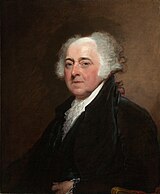 |
John Adams | 1735-1826 | 1797-1801 | 1796 (Federalist) |
| 3 |  |
Thomas Jefferson | 1743-1826 | 1801-1809 | 1800, 1804 (Democratic-Republican) |
| 4 |  |
James Madison | 1751-1836 | 1809-1817 | 1808, 1812 (Democratic-Republican) |
| 5 |  |
James Monroe | 1758-1831 | 1817-1825 | 1816, 1820 (Democratic-Republican) |
| 6 |  |
John Quincy Adams | 1767-1848 | 1825-1829 | 1824 (Democratic-Republican, National Republican) |
| 7 | 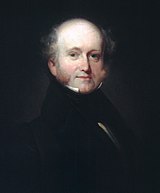 |
Andrew Jackson | 1767-1845 | 1829-1837 | 1828, 1832 (Democratic) |
| 8 |  |
Martin Van Buren | 1782-1862 | 1837-1841 | 1836 (Democratic) |
| 9 |  |
William Henry Harrison | 1773-1841 | 1841 (March 4 – April 4) | 1840 (Whig) |
| 10 |  |
John Tyler | 1790-1862 | 1841-1845 | 1841- Unaffiliated, Whig |
| 11 |  |
James K. Polk | 1795-1849 | 1845-1849 | 1844 (Democratic) |
| 12 | 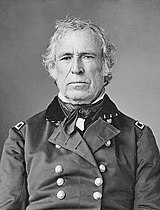 |
Zachary Taylor | 1784-1850 | 1849 (March 4 – July 9) | 1848 (Whig) |
| 13 |  |
Millard Fillmore | 1800-1874 | 1850-1853 | – |
| 14 |  |
Franklin Pierce | 1804-1869 | 1853-1857 | 1852 (Democratic) |
| 15 | 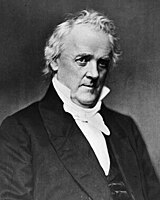 |
James Buchanan | 1791-1868 | 1857-1861 | 1856 (Democratic) |
| 16 | 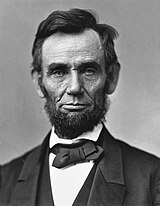 |
Abraham Lincoln | 1809-1865 | 1861-1865 | 1860, 1864 (Republican, National Union) |
| 17 |  |
Andrew Johnson | 1808-1875 | 1865-1869 | – |
| 18 | 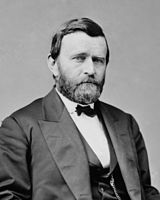 |
Ulysses S. Grant | 1822-1885 | 1869-1877 | 1868, 1872 (Republican) |
| 19 |  |
Rutherford B. Hayes | 1822-1893 | 1877-1881 | 1876 (Republican) |
| 20 |  |
James A. Garfield | 1831-1881 | 1881 (March 4 – September 19) | 1880 (Republican) |
| 21 |  |
Chester A. Arthur | 1829-1886 | 1881-1885 | – |
| 22 |  |
Grover Cleveland | 1837-1908 | 1885-1889 | 1884 (Democratic) |
| 23 | 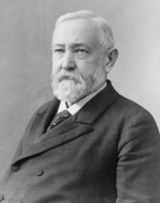 |
Benjamin Harrison | 1833-1901 | 1889-1893 | 1888 (Republican) |
| 24 |  |
Grover Cleveland | 1837-1908 | 1893-1897 | 1892 (Democratic) |
| 25 |  |
William McKinley | 1843-1901 | 1897-1901 | 1896, 1900 (Republican) |
| 26 |  |
Theodore Roosevelt | 1858-1919 | 1901-1909 | – |
| 27 | 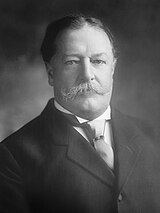 |
William H. Taft | 1857-1930 | 1909-1913 | 1908 (Republican) |
| 28 |  |
Woodrow Wilson | 1856-1924 | 1913-1921 | 1912, 1916 (Democratic) |
| 29 |  |
Warren G. Harding | 1865-1923 | 1921-1923 | 1920 (Republican) |
| 30 | 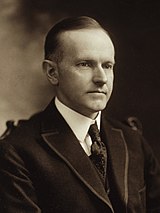 |
Calvin Coolidge | 1872-1933 | 1923-1929 | – |
| 31 |  |
Herbert Hoover | 1874-1964 | 1929-1933 | 1928 (Republican) |
| 32 | 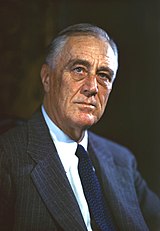 |
Franklin D. Roosevelt | 1882-1945 | 1933-1945 | 1932, 1936, 1940, 1944 (Democratic) |
| 33 |  |
Harry S. Truman | 1884-1972 | 1945-1953 | – |
| 34 | 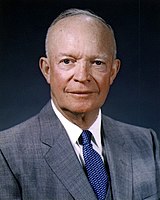 |
Dwight D. Eisenhower | 1890-1969 | 1953-1961 | 1952, 1956 (Republican) |
| 35 |  |
John F. Kennedy | 1917-1963 | 1961-1963 | 1960 (Democratic) |
| 36 | 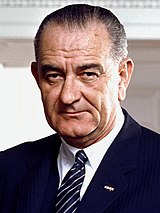 |
Lyndon B. Johnson | 1908-1973 | 1963-1969 | – |
| 37 |  |
Richard Nixon | 1913-1994 | 1969-1974 | 1968, 1972 (Republican) |
| 38 | 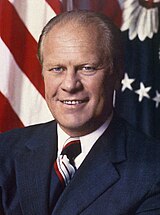 |
Gerald Ford | 1913-2006 | 1974-1977 | – |
| 39 | 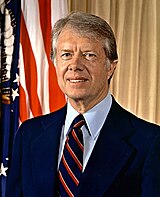 |
Jimmy Carter | born 1924 | 1977-1981 | 1976 (Democratic) |
| 40 | 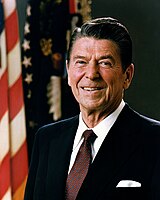 |
Ronald Reagan | 1911-2004 | 1981-1989 | 1980, 1984 (Republican) |
| 41 |  |
George H. W. Bush | 1924-2018 | 1989-1993 | 1988 (Republican) |
| 42 | 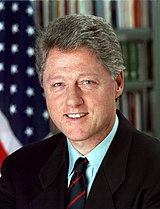 |
Bill Clinton | born 1946 | 1993-2001 | 1992, 1996 (Democratic) |
| 43 |  |
George W. Bush | born 1946 | 2001-2009 | 2000, 2004 (Republican) |
| 44 |  |
Barack Obama | born 1961 | 2009-2017 | 2008, 2012 (Democratic) |
| 45 | 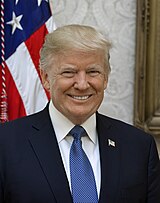 |
Donald Trump | born 1946 | 2017-2021 | 2016 (Republican) |
| 46 | 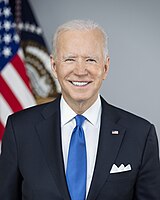 |
Joe Biden | born 1942 | 2021-Present | 2020 (Democratic) |





